ASUS Padfone 2 - Mobile Transformer
At the mobile congress in Barcelona, ASUS showed another update of an interesting transformer - Padfone Infinity, but it will not be available soon. The hero of this review is Padfone 2, released in late 2012, which can be bought in Russia.
ASUS, of course, hit the bull's eye, back in 2011, presenting its first Padfone. While many manufacturers measured cores and brought lawsuits against each other, ASUS engineers and designers created a truly memorable product. Some design solutions and hardware have changed, logically improved the ASUS ecosystem. Although this update cannot be called revolutionary, it was not limited to cosmetic changes.
Other innovations increase the level of ASUS smartphones to leading vendors in the field of mobile technology.
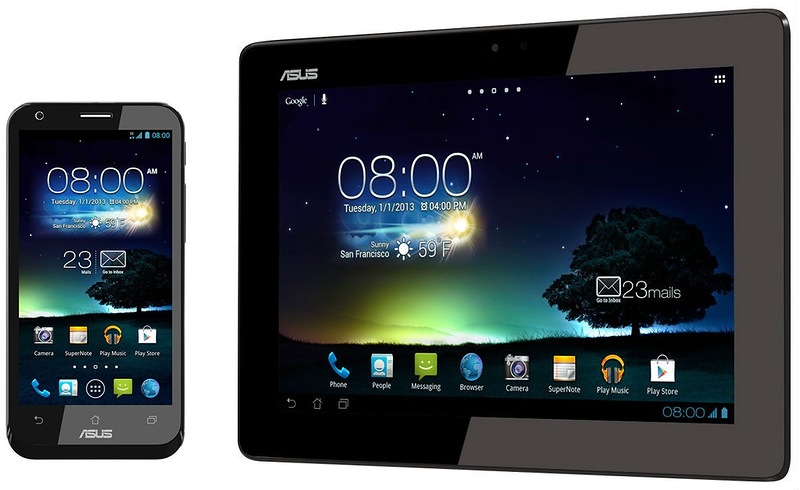
Software: Android 4.1 Jelly Bean
Color: Black / White
Phone dimensions: 137.9x68.9x9 mm
Tablet dimensions: 263x180.8x10.4 mm
Phone weight: 135 g
Tablet weight: 514 g
Processor: Qualcomm Snapdragon S4 Pro Krait (Cortex-A15 class) Quad-Core 1.5GHz with Adreno 320 graphics
RAM: 2 GB LPDDR2 RAM
Data storage: 16GB / 32GB / 64GB eMMc Flash + 50GB ASUS cloud for 2 years
Interfaces: WLAN 802.11 a / b / g / n, Bluetooth V4.0, NFC, WCDMA: 900/2100, EDGE / GPRS / GSM: 850/900/1800/1900, LTE: 800/1800/2600, GPS: AGPS & GLONASS
Phone Display: 4.7 ”, HD 1280x720, Super IPS + Corning® Glass
Tablet Display: 10.1 ”, WXGA 1280x800, IPS Corning® Glass
Phone battery: 2140 mAh lithium
Tablet Battery: 19 Whr / 5000 mAh Lithium
Camera phone: 1.2 MP and 13 MP, autofocus, aperture F2.4, 5 -element lens
Tablet Camera: 1 MP
Sensors: G-Sensor / E-Compass / Gyroscope / Proximity / Light Sensor
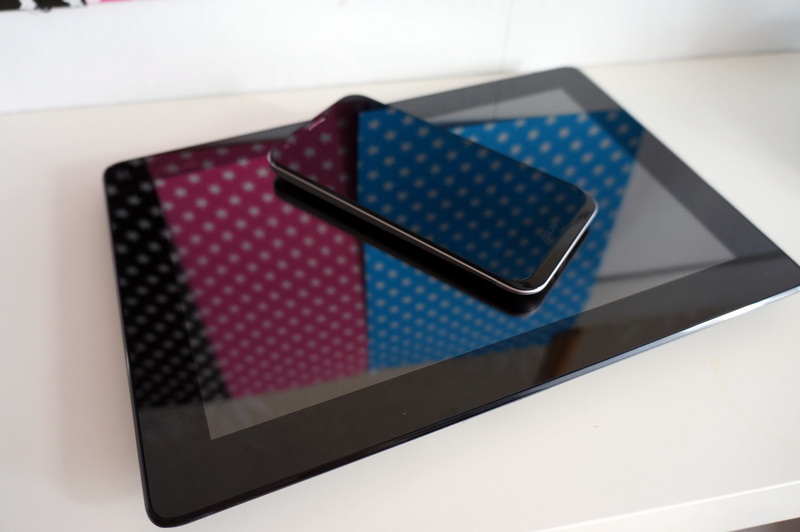
')
The design of ASUS Padfone 2 is very memorable compared to other brands. The device benefits from ease of use, tactile sensation and appearance. Thanks to the design and unique design ideas, ASUS has found its niche in the consumer equipment market.
This unit, combining the numerous developments in 2012, will be a good helper in work and entertainment. First of all, Padfone 2 is focused on those who use smartphones and tablets. Therefore, it will be of interest to both active users and business people. ASUS Padfone 2 is available in two colors - white and black.
The device will be especially useful for users who find it much more convenient to store all data on a smartphone, but if necessary, access the large screen of the tablet. Padfone 2 - two devices with one memory. Sophisticated technology allows you to seamlessly switch between devices: the screen on the tablet automatically turns on when the smartphone is in the dock. In this case, everything that the user did at that time in the smartphone is automatically transferred to the tablet screen. Any activity, whether reading a book, checking mail or watching a movie, will open in the same place, but on the tablet.
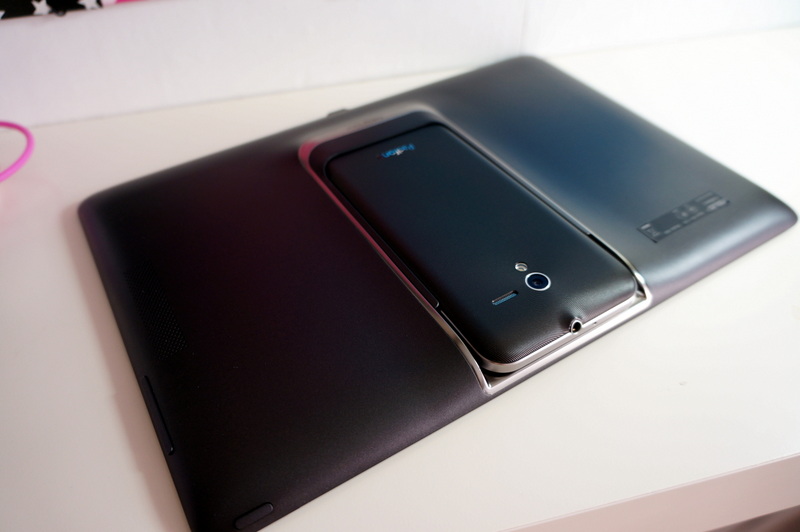
The standard package includes a smartphone, tablet dock, collecting charger, case, headset, micro USB with MHL support for connecting to a PC. The presence of such a connector is very useful, because the MHL interface allows you to transfer video in 1080p resolution, 7.1 sound without loss of quality, while charging the connected device.
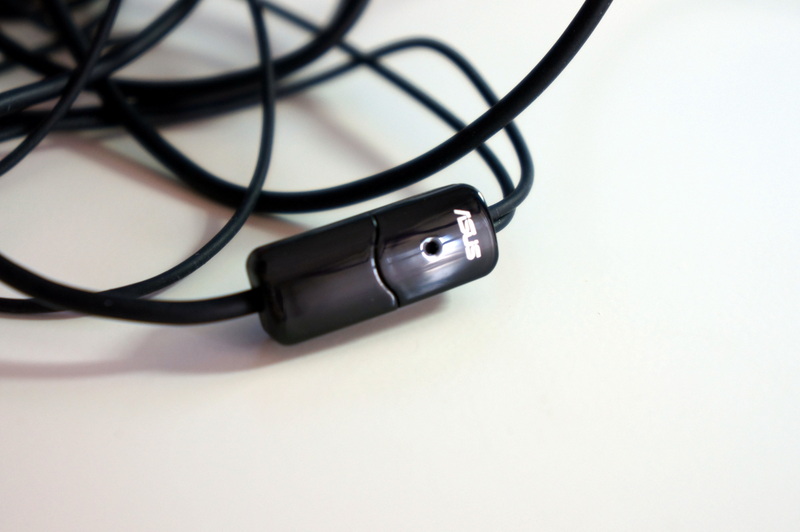
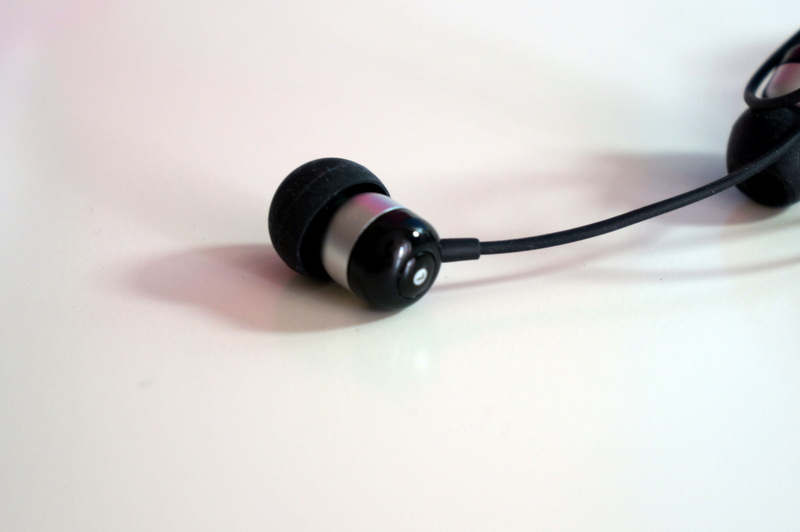
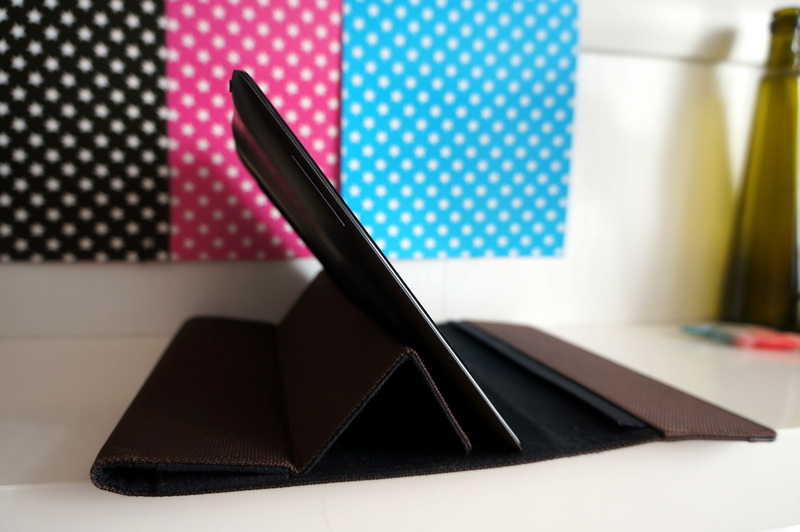
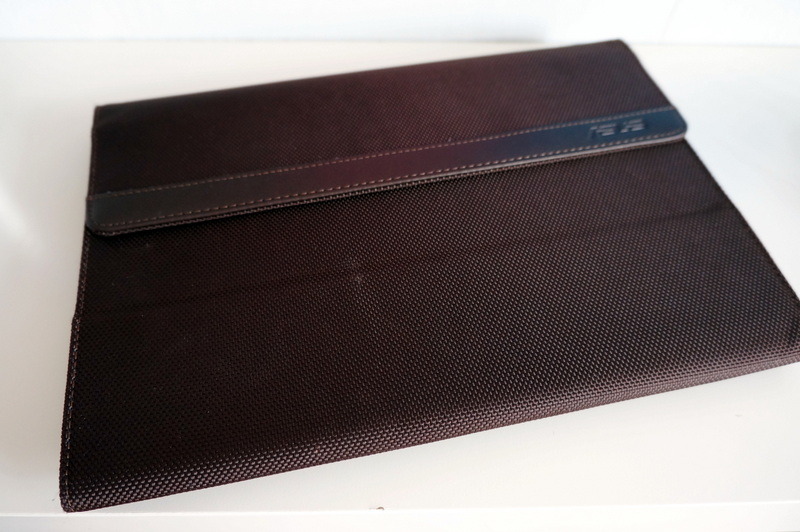
The size of the device is quite impressive, but it has become a tradition for smartphones. Weight - 135 g, but when using it does not seem heavy.
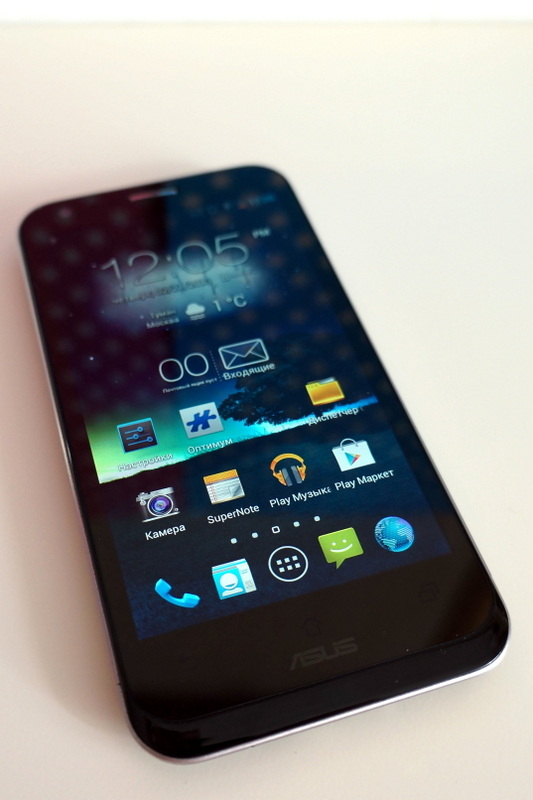
The advantages of a smartphone include its thin profile and a metal insert that runs along the entire perimeter of the case.

The display merges with the frame, forming a monolithic black surface that looks very good. The back cover is made of Soft-touch plastic with an interesting corrugated texture in the form of circles.
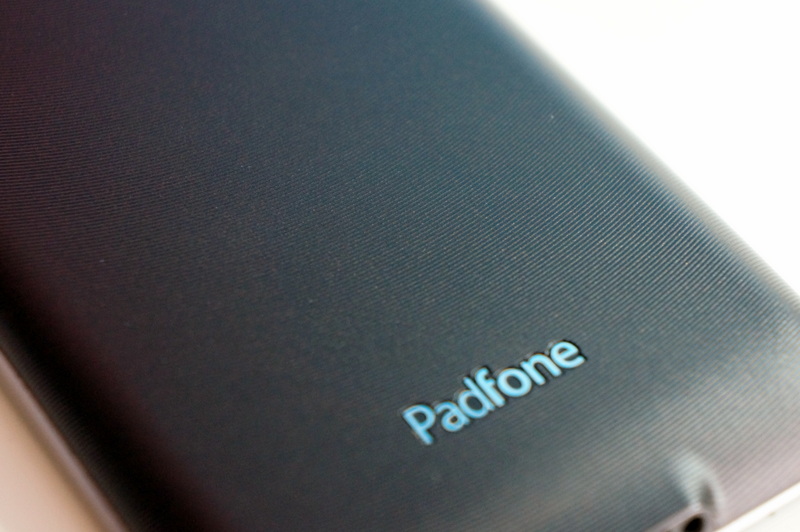
Thanks to the non-slip coating, the smartphone is pleasant to hold in your hand, and the high haze eliminates surface glare. On the back side are the front camera, proximity sensors and lighting, speaker and barely noticeable inscription "ASUS".

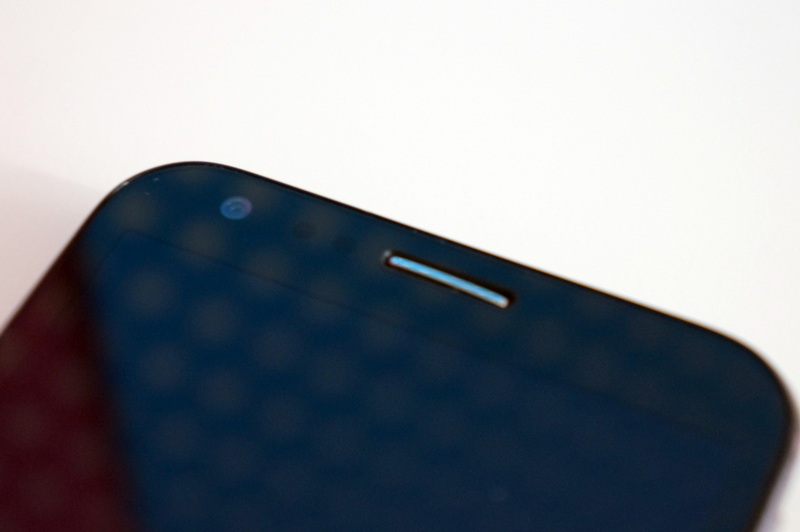
A microphone, a 3.5 mm mini-jack headphone jack and a microSIM tray are on the top.
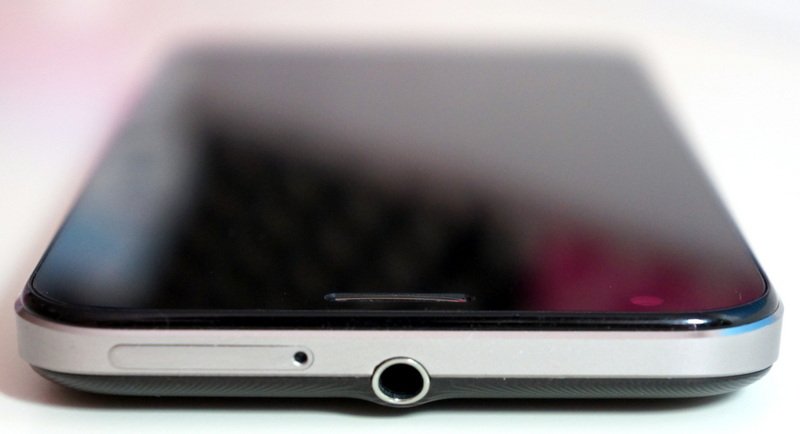
On the right side face there is a volume rocker and an on / off button.
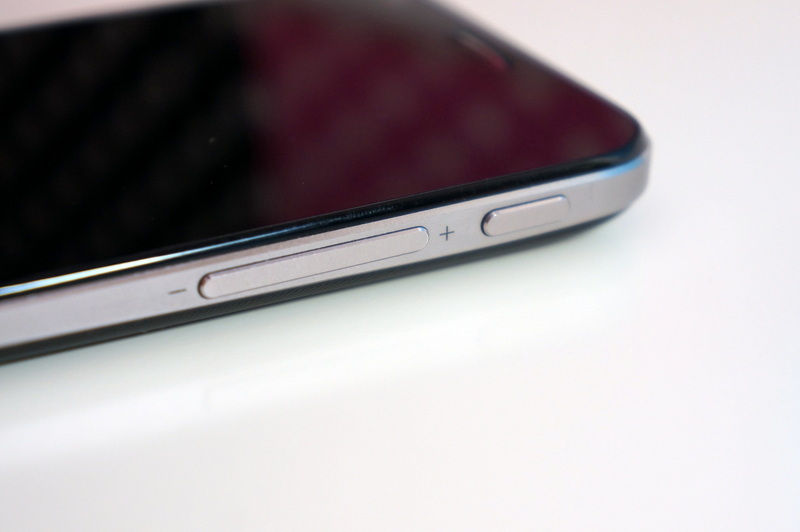
Below is a second microphone, a micro USB connector and two openings for holding the Padfone in the docking station.
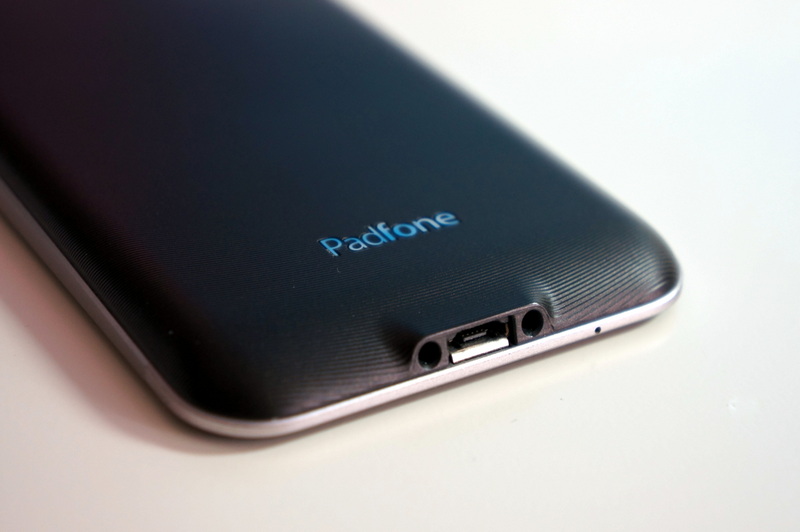
Behind are the main camera with LED flash, the speaker and the inscription "Padfone". Buttons, speakers, edging the camera are made in the same style. As a result, the smartphone turned out strict and minimalistic.
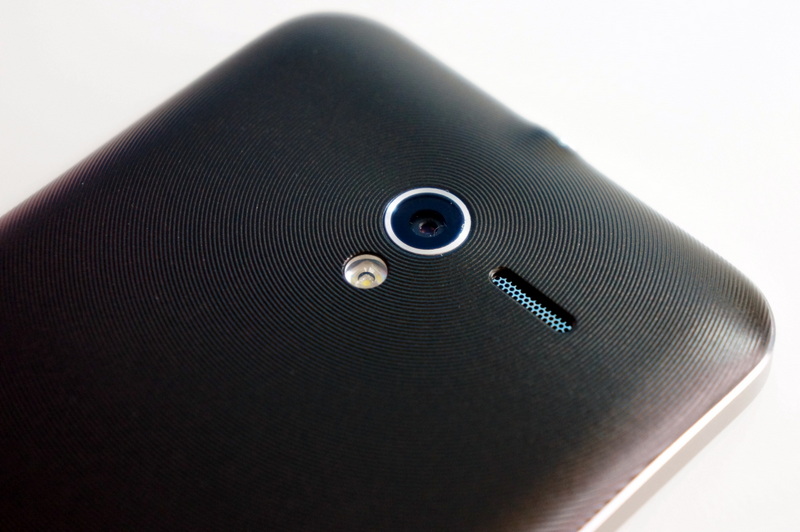
The ergonomics of the device is well thought out: it is very convenient to use the smartphone with one hand both when pressing rationally located mechanical buttons and when navigating on the display. There are no complaints about the assembly: the smartphone is made with high quality, it does not creak or backlash, the back cover is not pressed through.

In pursuit of solidity of the case and the minimum thickness, ASUS has deprived consumers of some of the usual features:
Standard size for 10-inch tablets. The total weight in the collection - 649 g, which does not cause discomfort. Along the perimeter of the hull a minimum number of joints is used
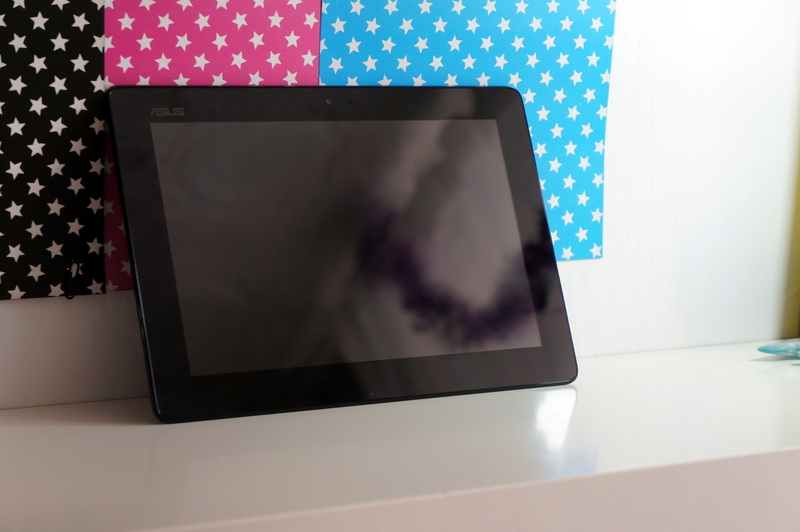

The front side is a monolithic display, covered with a protective glass Corning Fit with a very mediocre oleophobic coating. Fingerprints are very noticeable on the tablet, dirt is quickly collected (the smartphone has no such problem). Also, the display stands out against the background of the frame (it has a grayish tint), which makes prints even more noticeable.

The back cover is made of rubberized plastic with a uniform relief. The coating does not slip and does not leave fingerprints. The corners are rounded and smoothed, so that the tablet is very nice and comfortable to hold in your hand in any position.
Compartment for a smartphone made with high quality, metal inserts and rubber tabs protect your smartphone from the destructive friction.
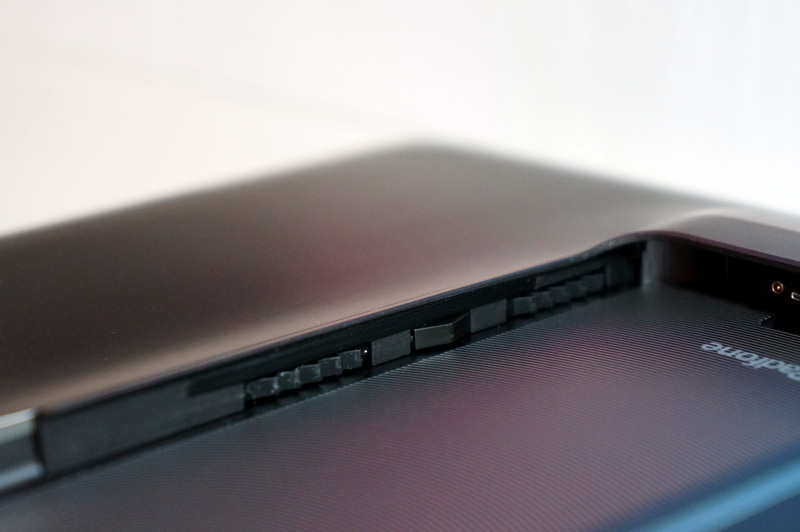
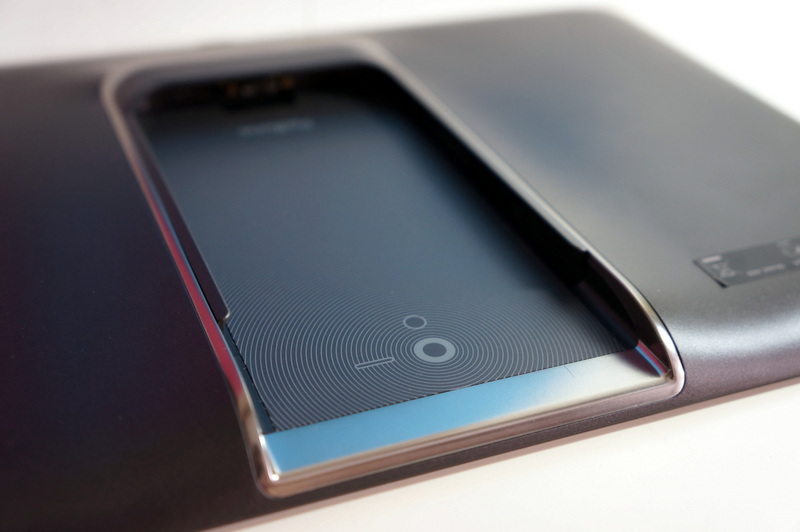
At the bottom is a micro USB connector.

Another of the features of the second-generation Padfone is the rejection of the proprietary keyboard connector, the keyboard itself, the compartment with the lid, which gave the final weight of the whole structure at the level of the usual 10-inch tablets - a good result for the 2 in 1 design.

On the left side is a volume rocker, on the right is a microphone, on top is a power button. On the left side of the back you can see the speaker holes.

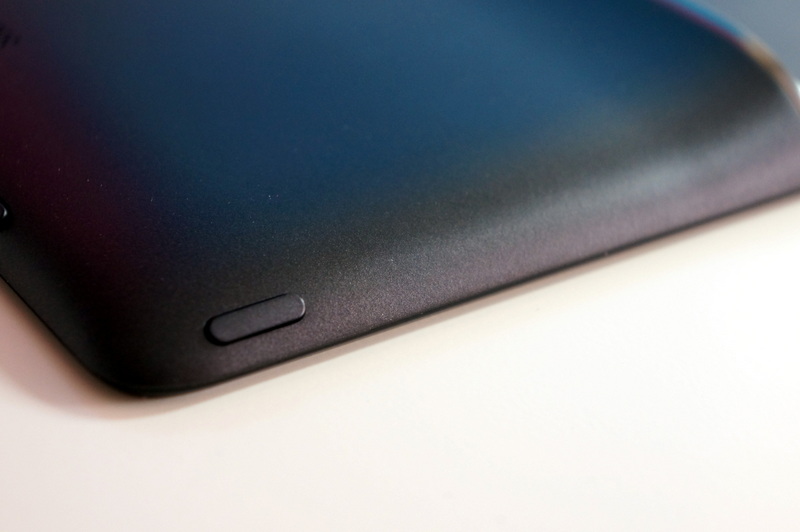
In general, the design is nice and thoughtful. The complete set looks presentable and rather unusual.
Dimensions:
smartphone - 137.9 x69x9 mm, weight - 135 g;
docking station - 263x180,8x10,4 mm, weight - 514 g.
The screen size is 58x104 mm, the diagonal is 120 mm (4.7 inches), the resolution is HD (1280x720 pixels), the pixel density of PPI is 312 dots per inch. The glass substrate has an oleophobic coating on which fingerprints are not visible.
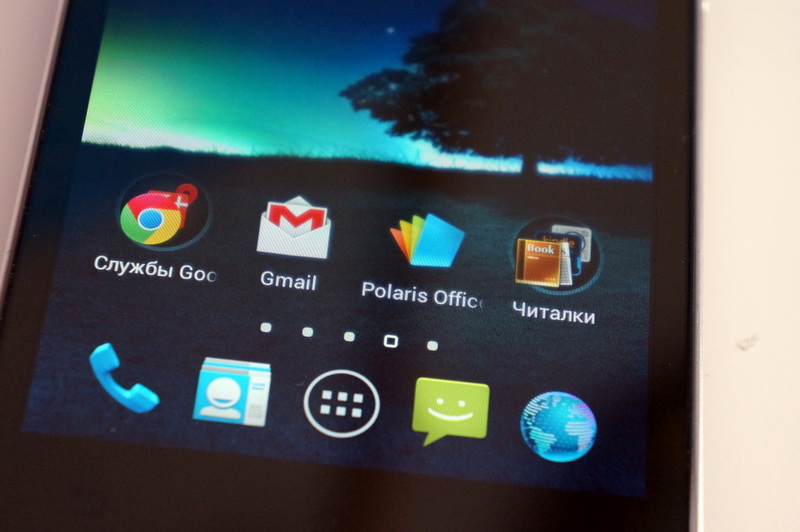
The use of anti-glare filter has a good effect on the quality of work with a smartphone in daylight. In direct sunlight, the situation changes for the worse - the semitones and small details differ poorly. But in this case, the software component comes to the rescue - three modes of display illumination:
1) Auto;
2) Normal (normal conditions);
3) Outdoor (on the street). When you turn on this mode, the brightness range moves up a lot.
The backlight settings are changing rapidly - they are integrated into the status bar.
The screen responds well to your fingers. Supports up to ten simultaneous touches, there is support for multi-touch. The response time is very high.
ASUS Padfone 2 is equipped with a Super IPS + LCD display, made using the new IGZO (Sharp) technology.
Super IPS + technology gives a high margin of brightness. The picture looks good, but, alas, it is not strong in everything:
The use of Sharp IGZO technology has such advantages as low response time, very high pixel density, clear and detailed image, and low power consumption.
The screen is 10.1 inches with a resolution of 1280x800 pixels, the matrix is Super IPS +, Corning Fit for protection against scratches.
The quality of performance is noticeably worse than on a smartphone (for a 10-inch tablet, I would like to see FullHD resolution).
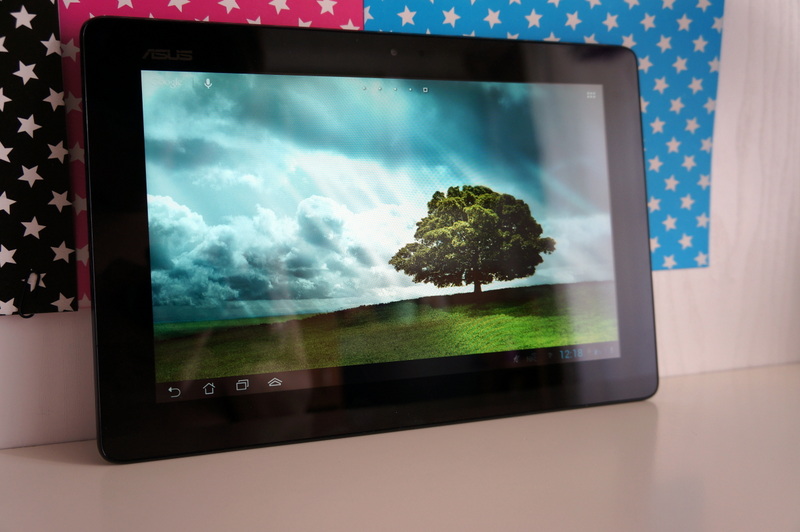
Here, unlike a smartphone, pixels are noticeable, which affects the quality of the reproduced content.

Brightness indicator is rather weak (about 200), bright colors look muted, the same problems with black and its shades remain, there is also a problem with white color: a blue tint is “knocked out” in it.
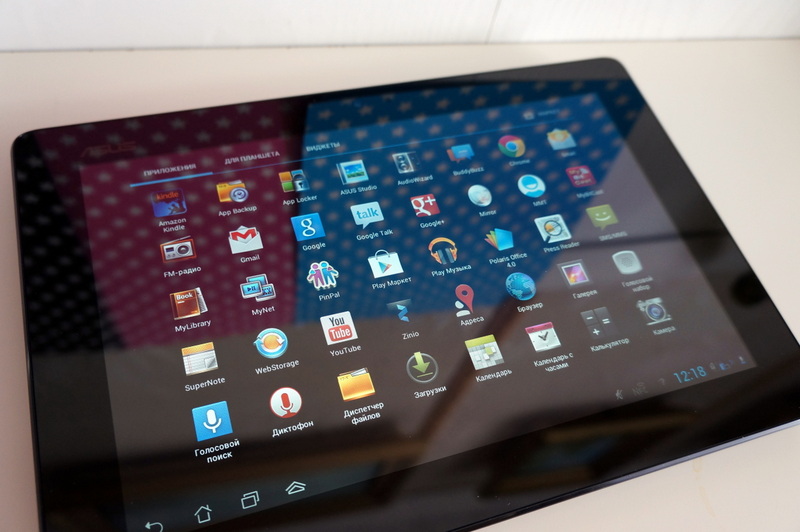
It is also worth noting that there is an air gap between the glass and the screen of the docking station, which reduces the perceived contrast in the light and makes it difficult to view the image at an angle and in sunlight.
I did not notice the anti-glare filter, and if it is, it is very bad. The image is distorted, the oleophobic coating is ineffective.
For the average inexperienced user, the display is good, delivers high-quality images and saves battery power (which is important), but if you feel the difference well, the display drawbacks are obvious.
The hardware platform ASUS Padfone 2 is based on the SoC Qualcomm MSM8960 Snapdragon S4 chip with a 1.5 GHz quad-core processor (ARMv7 Krait). Support in graphics processing has a powerful video accelerator Adreno 320. Also, the device boasts the presence of 2 GB of RAM.
For Russia, user memory is represented in 64 GB.
Synthetic test results:
Specifications:
From personal experience, I can say that the smartphone does not slow down. The interface is smooth, programs open quickly, the browser loads heavy pages rather quickly, high-definition video plays without drop-down frames, and heavy games also go bang.
Android 4.1.1 Jelly Bean is used as the pre-installed operating system. Branded shell is very similar to stock, both visually and programmatically.
I liked the unlock screen - it is also standard: with one slider movement you can get into the camera, google or on the desktop. The minimal interference of ASUS into the interface has led to the fact that the ASUS shell is working properly and does not force the program to be displayed at random. Launcher: 4x5 grid is on by default, circular scrolling is supported. On the desktop, quite a simple animation of turning over: overlapping pages with each other, without 3D effects. The set of standard widgets and application icons is small, standard “live” wallpapers also look pretty simple.
Among the innovations are the tab “Programs for the tablet” and the appearance of the section “ASUS Individual Settings”, where you can set up fine settings for applications, charging modes, button operation, smartphone and tablet interaction, etc. Also pleased that the status bar has become very informative: in one tap you can change various settings. There was such an interesting feature as thumbnails of applications that can be displayed in the background and used in any program. There are few of them, but we will wait for the increase in the number with the following firmware.
Interesting pre-installed programs and services:
The speaker of the tablet is located on the reverse side. The Padfone 2 and Padfone 2 Station features SonicMaster audio technology, which provides high quality sound. Specialists from Waves Audio, the owners of the Technical GRAMMY award, took part in its creation.

The smartphone has a 13 megapixel camera from Sony, equipped with a backlit sensor, aperture (F2.4), 5-element optical circuit, auto focus and LED flash.
A very modest camera is installed at the station - only 1 Mp.

The distinctive features include the fact that when shooting video in HD (720p) recording speed will be 60 frames per second. Also, the camera has a rapid-fire shooting - 6 frames per second. Perhaps this is one of the best results among mobile cameras.
A wide range of camera settings: panorama, enhancement, HDR and others, there are also effects applied by the camera itself (for example, vintage and LOMO), in the menu you can find numerous fine-tuning parameters that will help to achieve the best result.
The camera takes good pictures, autofocus works well, sharpness - at four, but in low light conditions there is a lot of noise in the photos.
Wi-Fi 802.11a / b / g / n - no jumps were detected, the device receives the signal stably, without interruptions, and “clings” well to distant points. It is also possible to transfer files via a bunch of Wi-Fi Direct.
Bluetooth 4.0, which I tested on my Sony SmartWatch, also works stably. The file transfer rate is standard for this modification.
GPS, A-GPS, Glonass - the location determines accurately and quickly (about 10 seconds).
NFC (NearFieldCommunication) is a short-range wireless high-frequency communication technology. The protocol is now becoming more common for data exchange between devices at a short distance (about 10 cm): file transfer, reading information from metro tickets and so on.
Supported frequencies:
Yes, yes, now we can work in 4G networks - Russia supports the frequency 2600 MHz. This is really a breakthrough in wireless technology!

Battery capacity has increased significantly compared with the first generation Padfone and is 2140 m * Ah. In conjunction with Jelly Bean, energy-saving screen technology and effective optimization of processes, you can not be afraid of the rapid discharge of the battery. The smartphone confidently “holds” the battery all day at moderate loads. If you squeeze all the juice out of it, then the charge will be enough until the evening (at least it worked for me so much when using energy-saving settings).
The docking station has a capacity of 5000 m * Ah, which is not a record, but you should not forget that it does not have a processor and many other devices that are present in the smartphone. In addition, it is important that the docking station can quickly charge the smartphone. A smaller battery capacity is a conscious choice in order to reduce the weight and size of the tablet.
Working time with a permanent connection is about 11 hours.
Operating time with periodic connection is about three days.
Charging the smartphone happens quickly: in about an hour and a half it reaches 100%. The tablet takes longer to charge - about three hours.
In the settings there is an interesting feature - “Intellectual charging”: you can enable the ability to charge the smartphone from the docking station, which is a definite plus.

ASUS Padfone 2 is a smartphone with good features and a docking station that functions as a tablet. The idea of this device is unique. At the price of an average flagship smartphone (about 35 thousand rubles), the user receives a 2 in 1 device. Depending on the situation, it can be used as a smartphone or as a tablet.
As a result, the user will benefit, having such advantages as:
ASUS, of course, hit the bull's eye, back in 2011, presenting its first Padfone. While many manufacturers measured cores and brought lawsuits against each other, ASUS engineers and designers created a truly memorable product. Some design solutions and hardware have changed, logically improved the ASUS ecosystem. Although this update cannot be called revolutionary, it was not limited to cosmetic changes.
Other innovations increase the level of ASUS smartphones to leading vendors in the field of mobile technology.

 Specifications
Specifications
Software: Android 4.1 Jelly Bean
Color: Black / White
Phone dimensions: 137.9x68.9x9 mm
Tablet dimensions: 263x180.8x10.4 mm
Phone weight: 135 g
Tablet weight: 514 g
Processor: Qualcomm Snapdragon S4 Pro Krait (Cortex-A15 class) Quad-Core 1.5GHz with Adreno 320 graphics
RAM: 2 GB LPDDR2 RAM
Data storage: 16GB / 32GB / 64GB eMMc Flash + 50GB ASUS cloud for 2 years
Interfaces: WLAN 802.11 a / b / g / n, Bluetooth V4.0, NFC, WCDMA: 900/2100, EDGE / GPRS / GSM: 850/900/1800/1900, LTE: 800/1800/2600, GPS: AGPS & GLONASS
Phone Display: 4.7 ”, HD 1280x720, Super IPS + Corning® Glass
Tablet Display: 10.1 ”, WXGA 1280x800, IPS Corning® Glass
Phone battery: 2140 mAh lithium
Tablet Battery: 19 Whr / 5000 mAh Lithium
Camera phone: 1.2 MP and 13 MP, autofocus, aperture F2.4, 5 -element lens
Tablet Camera: 1 MP
Sensors: G-Sensor / E-Compass / Gyroscope / Proximity / Light Sensor

')
 Appearance and positioning
Appearance and positioning
The design of ASUS Padfone 2 is very memorable compared to other brands. The device benefits from ease of use, tactile sensation and appearance. Thanks to the design and unique design ideas, ASUS has found its niche in the consumer equipment market.
This unit, combining the numerous developments in 2012, will be a good helper in work and entertainment. First of all, Padfone 2 is focused on those who use smartphones and tablets. Therefore, it will be of interest to both active users and business people. ASUS Padfone 2 is available in two colors - white and black.
The device will be especially useful for users who find it much more convenient to store all data on a smartphone, but if necessary, access the large screen of the tablet. Padfone 2 - two devices with one memory. Sophisticated technology allows you to seamlessly switch between devices: the screen on the tablet automatically turns on when the smartphone is in the dock. In this case, everything that the user did at that time in the smartphone is automatically transferred to the tablet screen. Any activity, whether reading a book, checking mail or watching a movie, will open in the same place, but on the tablet.

The standard package includes a smartphone, tablet dock, collecting charger, case, headset, micro USB with MHL support for connecting to a PC. The presence of such a connector is very useful, because the MHL interface allows you to transfer video in 1080p resolution, 7.1 sound without loss of quality, while charging the connected device.




Smartphone design
The size of the device is quite impressive, but it has become a tradition for smartphones. Weight - 135 g, but when using it does not seem heavy.

The advantages of a smartphone include its thin profile and a metal insert that runs along the entire perimeter of the case.

The display merges with the frame, forming a monolithic black surface that looks very good. The back cover is made of Soft-touch plastic with an interesting corrugated texture in the form of circles.

Thanks to the non-slip coating, the smartphone is pleasant to hold in your hand, and the high haze eliminates surface glare. On the back side are the front camera, proximity sensors and lighting, speaker and barely noticeable inscription "ASUS".


A microphone, a 3.5 mm mini-jack headphone jack and a microSIM tray are on the top.

On the right side face there is a volume rocker and an on / off button.

Below is a second microphone, a micro USB connector and two openings for holding the Padfone in the docking station.

Behind are the main camera with LED flash, the speaker and the inscription "Padfone". Buttons, speakers, edging the camera are made in the same style. As a result, the smartphone turned out strict and minimalistic.

The ergonomics of the device is well thought out: it is very convenient to use the smartphone with one hand both when pressing rationally located mechanical buttons and when navigating on the display. There are no complaints about the assembly: the smartphone is made with high quality, it does not creak or backlash, the back cover is not pressed through.

In pursuit of solidity of the case and the minimum thickness, ASUS has deprived consumers of some of the usual features:
- The sim-card is now inserted using a special clip, but this does not cause difficulties, since most people reinstall the SIM card no more than once a year;
- non-removable battery. But, first, the 2140 mAh battery plus the OS optimization will not allow the smartphone to discharge quickly even at maximum loads. Secondly, in the second generation it was possible to achieve the same speed of charging the device from the dock battery as when using the charger! As a result, when using the dock, you can get three times the smartphone’s working time;
- as in many modern smartphones, there is no memory card slot - to expand the memory of the device, it is more convenient to use various "cloud" services. For example, ASUS itself offers 50 GB free ASUS Webstorage for 2 years. And for undemanding users, 64 regular gigabytes is more than enough.
Tablet design
Standard size for 10-inch tablets. The total weight in the collection - 649 g, which does not cause discomfort. Along the perimeter of the hull a minimum number of joints is used


The front side is a monolithic display, covered with a protective glass Corning Fit with a very mediocre oleophobic coating. Fingerprints are very noticeable on the tablet, dirt is quickly collected (the smartphone has no such problem). Also, the display stands out against the background of the frame (it has a grayish tint), which makes prints even more noticeable.

The back cover is made of rubberized plastic with a uniform relief. The coating does not slip and does not leave fingerprints. The corners are rounded and smoothed, so that the tablet is very nice and comfortable to hold in your hand in any position.
Compartment for a smartphone made with high quality, metal inserts and rubber tabs protect your smartphone from the destructive friction.


At the bottom is a micro USB connector.

Another of the features of the second-generation Padfone is the rejection of the proprietary keyboard connector, the keyboard itself, the compartment with the lid, which gave the final weight of the whole structure at the level of the usual 10-inch tablets - a good result for the 2 in 1 design.

On the left side is a volume rocker, on the right is a microphone, on top is a power button. On the left side of the back you can see the speaker holes.


In general, the design is nice and thoughtful. The complete set looks presentable and rather unusual.
Dimensions:
smartphone - 137.9 x69x9 mm, weight - 135 g;
docking station - 263x180,8x10,4 mm, weight - 514 g.
 Screen
Screen
Smartphone
The screen size is 58x104 mm, the diagonal is 120 mm (4.7 inches), the resolution is HD (1280x720 pixels), the pixel density of PPI is 312 dots per inch. The glass substrate has an oleophobic coating on which fingerprints are not visible.

The use of anti-glare filter has a good effect on the quality of work with a smartphone in daylight. In direct sunlight, the situation changes for the worse - the semitones and small details differ poorly. But in this case, the software component comes to the rescue - three modes of display illumination:
1) Auto;
2) Normal (normal conditions);
3) Outdoor (on the street). When you turn on this mode, the brightness range moves up a lot.
The backlight settings are changing rapidly - they are integrated into the status bar.
The screen responds well to your fingers. Supports up to ten simultaneous touches, there is support for multi-touch. The response time is very high.
ASUS Padfone 2 is equipped with a Super IPS + LCD display, made using the new IGZO (Sharp) technology.
Super IPS + technology gives a high margin of brightness. The picture looks good, but, alas, it is not strong in everything:
- the brightness index “floats” and does not reach (it is felt) up to the declared 500 cd / m, which is why the image is not very bright;
- black color has a clear gray, which is strongly manifested when changing viewing angles. The level of AMOLED matrices with their perfect black color and shades of gray is still very far away;
- despite the high brightness, contrast is also not the strong side of IPS. Pictures look a little faded and not as saturated as we would like;
- the display in the usual position has a good color rendition, but when rejected the picture gets a weak whitish "patina".
The use of Sharp IGZO technology has such advantages as low response time, very high pixel density, clear and detailed image, and low power consumption.
The tablet
The screen is 10.1 inches with a resolution of 1280x800 pixels, the matrix is Super IPS +, Corning Fit for protection against scratches.
The quality of performance is noticeably worse than on a smartphone (for a 10-inch tablet, I would like to see FullHD resolution).

Here, unlike a smartphone, pixels are noticeable, which affects the quality of the reproduced content.

Brightness indicator is rather weak (about 200), bright colors look muted, the same problems with black and its shades remain, there is also a problem with white color: a blue tint is “knocked out” in it.

It is also worth noting that there is an air gap between the glass and the screen of the docking station, which reduces the perceived contrast in the light and makes it difficult to view the image at an angle and in sunlight.
I did not notice the anti-glare filter, and if it is, it is very bad. The image is distorted, the oleophobic coating is ineffective.
For the average inexperienced user, the display is good, delivers high-quality images and saves battery power (which is important), but if you feel the difference well, the display drawbacks are obvious.
 Performance
Performance
The hardware platform ASUS Padfone 2 is based on the SoC Qualcomm MSM8960 Snapdragon S4 chip with a 1.5 GHz quad-core processor (ARMv7 Krait). Support in graphics processing has a powerful video accelerator Adreno 320. Also, the device boasts the presence of 2 GB of RAM.
For Russia, user memory is represented in 64 GB.
Synthetic test results:
- Quadrant Standard - 6256 points;
- AnTuTu - 10 196 points.
Specifications:
- GeekBench 2.3.5 (processor performance) - 2010;
- SunSpider 0.9.1 (speed of the JavaScript engine) - 1315.9 ms;
- NenaMark2 (v2.4) (graphics performance) - 59 frames per second.
From personal experience, I can say that the smartphone does not slow down. The interface is smooth, programs open quickly, the browser loads heavy pages rather quickly, high-definition video plays without drop-down frames, and heavy games also go bang.
 OS and features
OS and features
Android 4.1.1 Jelly Bean is used as the pre-installed operating system. Branded shell is very similar to stock, both visually and programmatically.
I liked the unlock screen - it is also standard: with one slider movement you can get into the camera, google or on the desktop. The minimal interference of ASUS into the interface has led to the fact that the ASUS shell is working properly and does not force the program to be displayed at random. Launcher: 4x5 grid is on by default, circular scrolling is supported. On the desktop, quite a simple animation of turning over: overlapping pages with each other, without 3D effects. The set of standard widgets and application icons is small, standard “live” wallpapers also look pretty simple.
Among the innovations are the tab “Programs for the tablet” and the appearance of the section “ASUS Individual Settings”, where you can set up fine settings for applications, charging modes, button operation, smartphone and tablet interaction, etc. Also pleased that the status bar has become very informative: in one tap you can change various settings. There was such an interesting feature as thumbnails of applications that can be displayed in the background and used in any program. There are few of them, but we will wait for the increase in the number with the following firmware.
Interesting pre-installed programs and services:
 Sound
Sound
The speaker of the tablet is located on the reverse side. The Padfone 2 and Padfone 2 Station features SonicMaster audio technology, which provides high quality sound. Specialists from Waves Audio, the owners of the Technical GRAMMY award, took part in its creation.

 Camera
Camera
The smartphone has a 13 megapixel camera from Sony, equipped with a backlit sensor, aperture (F2.4), 5-element optical circuit, auto focus and LED flash.
A very modest camera is installed at the station - only 1 Mp.

The distinctive features include the fact that when shooting video in HD (720p) recording speed will be 60 frames per second. Also, the camera has a rapid-fire shooting - 6 frames per second. Perhaps this is one of the best results among mobile cameras.
A wide range of camera settings: panorama, enhancement, HDR and others, there are also effects applied by the camera itself (for example, vintage and LOMO), in the menu you can find numerous fine-tuning parameters that will help to achieve the best result.
The camera takes good pictures, autofocus works well, sharpness - at four, but in low light conditions there is a lot of noise in the photos.
 Interfaces
Interfaces
Wi-Fi 802.11a / b / g / n - no jumps were detected, the device receives the signal stably, without interruptions, and “clings” well to distant points. It is also possible to transfer files via a bunch of Wi-Fi Direct.
Bluetooth 4.0, which I tested on my Sony SmartWatch, also works stably. The file transfer rate is standard for this modification.
GPS, A-GPS, Glonass - the location determines accurately and quickly (about 10 seconds).
NFC (NearFieldCommunication) is a short-range wireless high-frequency communication technology. The protocol is now becoming more common for data exchange between devices at a short distance (about 10 cm): file transfer, reading information from metro tickets and so on.
Supported frequencies:
- GSM GPRS / EDGE 850, 900, 1800, 1900 MHz;
- WCDMA 900, 2100 MHz, HSPA +;
- LTE 800/1800/2600 MHz.
Yes, yes, now we can work in 4G networks - Russia supports the frequency 2600 MHz. This is really a breakthrough in wireless technology!

 Battery and working time
Battery and working time
Battery capacity has increased significantly compared with the first generation Padfone and is 2140 m * Ah. In conjunction with Jelly Bean, energy-saving screen technology and effective optimization of processes, you can not be afraid of the rapid discharge of the battery. The smartphone confidently “holds” the battery all day at moderate loads. If you squeeze all the juice out of it, then the charge will be enough until the evening (at least it worked for me so much when using energy-saving settings).
The docking station has a capacity of 5000 m * Ah, which is not a record, but you should not forget that it does not have a processor and many other devices that are present in the smartphone. In addition, it is important that the docking station can quickly charge the smartphone. A smaller battery capacity is a conscious choice in order to reduce the weight and size of the tablet.
Working time with a permanent connection is about 11 hours.
Operating time with periodic connection is about three days.
Charging the smartphone happens quickly: in about an hour and a half it reaches 100%. The tablet takes longer to charge - about three hours.
In the settings there is an interesting feature - “Intellectual charging”: you can enable the ability to charge the smartphone from the docking station, which is a definite plus.
 Conclusion
Conclusion

ASUS Padfone 2 is a smartphone with good features and a docking station that functions as a tablet. The idea of this device is unique. At the price of an average flagship smartphone (about 35 thousand rubles), the user receives a 2 in 1 device. Depending on the situation, it can be used as a smartphone or as a tablet.
As a result, the user will benefit, having such advantages as:
- all programs, files, games (and their results), content instantly available on two devices at once;
- long battery life with smart charging function;
- One SIM card for two gadgets, as well as support for Russian LTE networks.
Source: https://habr.com/ru/post/172503/
All Articles